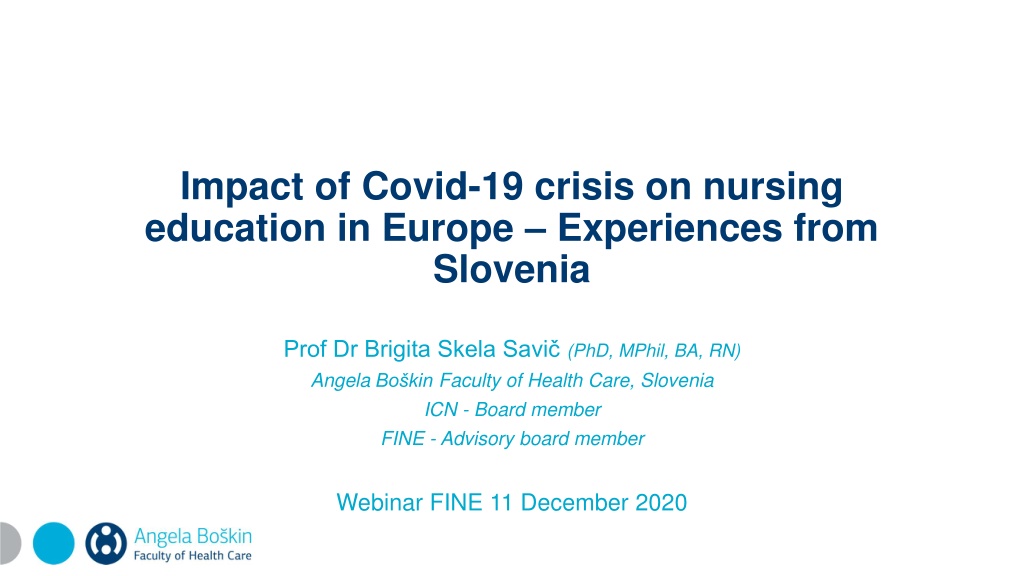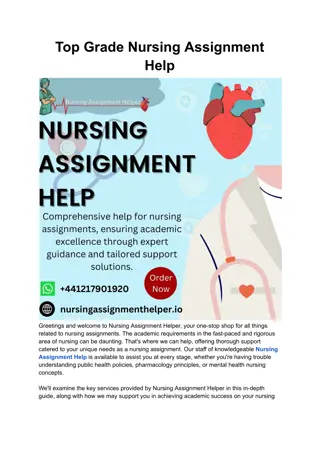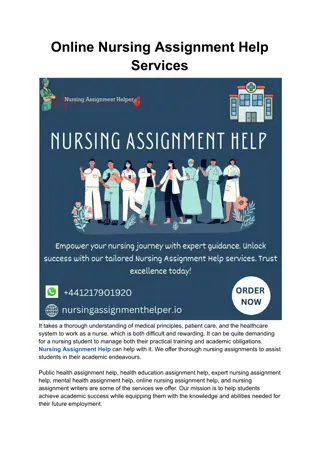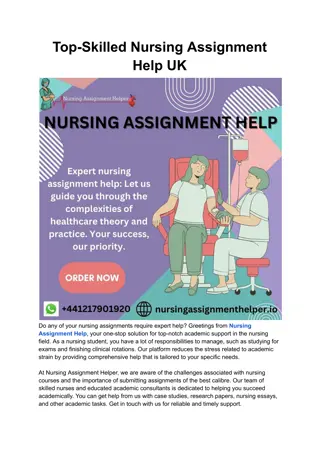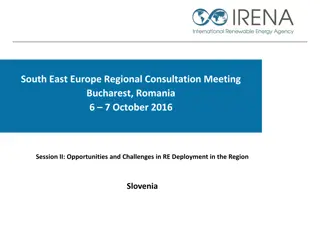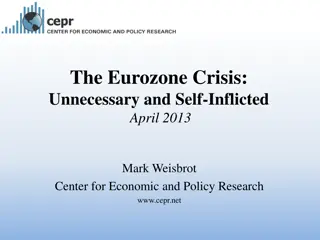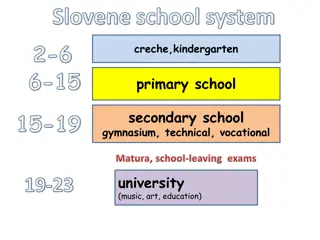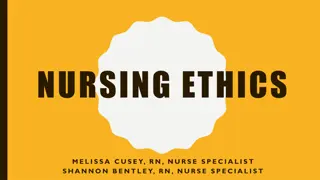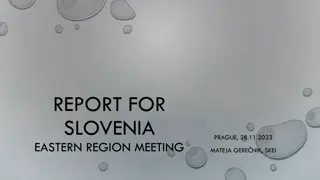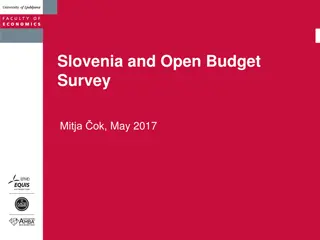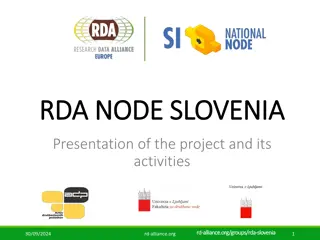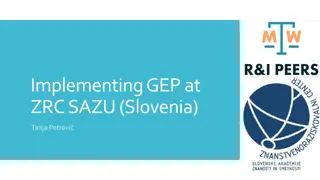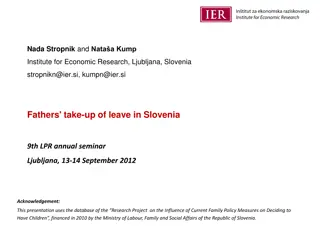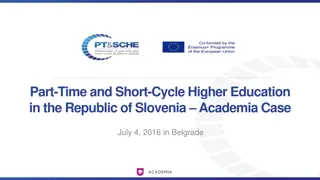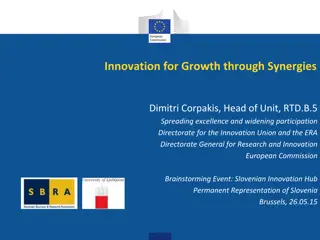Impact of Covid-19 Crisis on Nursing Education in Europe: Experiences from Slovenia
The Covid-19 crisis significantly affected nursing education in Slovenia, with interruptions in clinical training, remote learning, and challenges in program implementation. The first wave led to country-wide lockdowns and closures, while the ongoing second wave continues to pose obstacles such as limited clinical experiences and demands for volunteers in healthcare settings.
Uploaded on Sep 30, 2024 | 0 Views
Download Presentation

Please find below an Image/Link to download the presentation.
The content on the website is provided AS IS for your information and personal use only. It may not be sold, licensed, or shared on other websites without obtaining consent from the author. Download presentation by click this link. If you encounter any issues during the download, it is possible that the publisher has removed the file from their server.
E N D
Presentation Transcript
Impact of Covid-19 crisis on nursing education in Europe Experiences from Slovenia Prof Dr Brigita Skela Savi (PhD, MPhil, BA, RN) Angela Bo kin Faculty of Health Care, Slovenia ICN - Board member FINE - Advisory board member Webinar FINE 11 December 2020
Situation nursing education in Slovenia #COVID19 The first wave of the epidemic Duration of the epidemic: March 12 to May 31. 2020 Complete closure of the country total lockdown (3 weeks). All lectures and seminars were remote to start of June; the same knowledge tests. Health facilities refused to allow students to attend clinical training for 6 weeks, students made up for missing clinical training during the summer, faculties had to pay the cost of protective equipment for students or provide protective equipment to train students in health care facilities. Comments for better understanding situation: Faculties must pay health care institutions mentoring hours when working with nursing students each year. Faculties prepare free annual trainings for mentors from clinical settings to improve approaches and skills in working with students.
The second wave of the epidemic Still ongoing, we have the highest mortality rate in Europe, the epidemic is not under control; remote pedagogical process; ban on exercises in simulation laboratories; refusal of clinical training for students, but a call for volunteers to help hospitals and nursing homes. Faculties still have problems with 1) protective equipment, 2) by accepting students into clinical settings, 3) by testing students in clinical settings, who pays for the test, 4) pressure from the Nursing Chamber to recognize volunteering as a clinical practice
Requirements of the Directive and realistic constraints on program implementation due to COVID19 Requirements of the Directive (2005/36/EC, 2013/55/EU) Realistic constraints on program implementation due to COVID19 in Slovenia - - Lectures and seminars are conducted at a distancelearning. Exercises in simulation laboratories (a group of six students) should not be conducted. These exercises are a condition for clinical practice in health care institutions at some subjects. 1) No mention on the implementation of the remote program. 2) The directive requires clinical training in the team (healthcare/nursing) and direct contact with a healthy or sick individual and/or community (Article 31/5 and supplement 2013). - Clinical training is limited, the Slovenian healthcare system is primarily focused on COVID19, and other healthcare services operate only for emergencies. Even if students are in clinical practice, the scope of knowledge and competencies is tied to the work and tasks in treating patients with COVID19. - - (c) Adequate clinical experience; such experience, which should be selected for its training value, should be gained under the supervision of qualified nursing staff and in places where the number of qualified staff and equipment are appropriate for the nursing care of the patient; (d) the ability to participate in the practical training of health personnel and experience of working with such personnel; (e) experience of working with members of other professions in the health sector. 3) Knowledge and skills that cannot be achieved or thus hindered (Article 31/6 c, d, e and supplement 2013) - - 4) Paragraph 7 (2013), the competences from a to h. - Implementation of the program at a distance, insufficiently accessible clinical training in various fields of health care has effects on the written competencies of the program from a to h.
Nurses' Contribution in Anti-COVID-19 (Chen et al., 2020) The most common competencies during an epidemic, when only medical treatment of COVID19 patients works. 1) providing health education, screening services, and support for the general public and for individuals in high-risk categories; nosocomial infection prevention and surveillance; implementing appropriate preparations and precautions in nursing home and long- term care settings; the protection of patients with immune deficits or underlying diseases such as chronic obstructive pulmonary disease, chronic illnesses, and cancer; providing care to patients with COVID-19 who are in an acute or critical condition. 2) 3) 4) 5)
The lessons learned in a crisis situation as well as in a normal operating mode - recommendations
Urgent considerations of amendments to the Directive The needs for nurses is increasing, society is aging / needs for more and more nurses (Buchan et al., 2018) Increase the number of hours of clinical learning in simulated laboratories. Not enough clinical environments. Research have shown that good preparation in simulation environments improves the effect of clinical training (Kang et al. 2020; Arrogante et al. 2020; Ogunyemi et al., 2020; Guerrero-Mart nez et al. 2020; Craig et al. 2020; Costa et al. 2020; Franklin et al. 2020; ). Why the study of nursing requires such an extensive part of clinical training compared to the study of general medicine? An extension of nursing studies to 4 years and defined clinical specialist training for a clinical nurse specialist and advance nurse practitioner as arranged for physicians. See study Maier et al. (2017), Maier and Aiken (2016).
Thank you. You can find me: email bskelasavic@fzab.si tviter @bskelasavic
